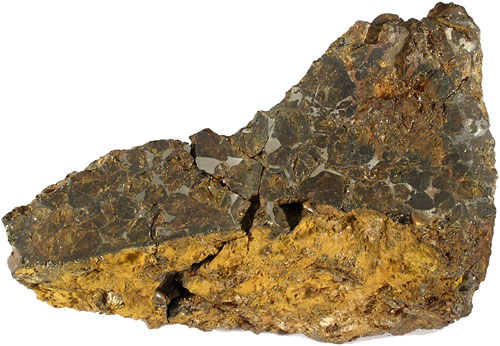


- Meteorites For Sale - Found A Meteorite? - Monthly Favourite - Meteorite Information - Classification List - Meteorite Collection - Media Centre - Home - Search - Site Map - Contact |
|
Pallasovka The Pallasovka meteorite was discovered in July, 1990 in the Volgograd region of Russia just 27.5km from the town of Pallasovka. It was found in the form of a single specimen weighing 198kg which was located on top of a dyke, partly submerged in clay. It is thought that the specimen was likely lifted from deeper down in 1978 when the dyke was built using explosives. Despite radial searches up to 4km from the original find site and speaking with locals in the area, no other pieces have been found. The Pallasovka meteorite has been classified as a Pallasite. Specifically it belongs to the main group of Pallasites but is distinct because of its unusual chromite composition. The first person to describe stony-iron meteorites was the German naturalist, Peter Simon Pallas in 1772. Interestingly, the town of Pallasovka was named after Pallas who worked in the area describing a steppe (an extensive plain or vast treeless grassland). Ironically, the Pallasovka meteorite was recognised in 2004 which was the same year the town celebrated its 100th Anniversary. The Pallasovka meteorite was an elongated polyhedron shape measuring 40x45x55cm with traces of ablation visible on only a few sides. Large regmaglypts were also present on some surfaces. The mineral composition of Pallasovka is typical of the Pallasites with it primarily consisting of Iron-Nickel (FeNi) metal and olivine. The olivine in this meteorite is approximately 60% by volume with some grains almost 3cm in diameter. Troilite (FeS) also occurs throughout the metal matrix with sizes of grains measured up to 5mm. This specimen is part of the Meteorites Australia Collection (MA.07.0017).
Click here to view the archive of the Monthly Favourites
|
